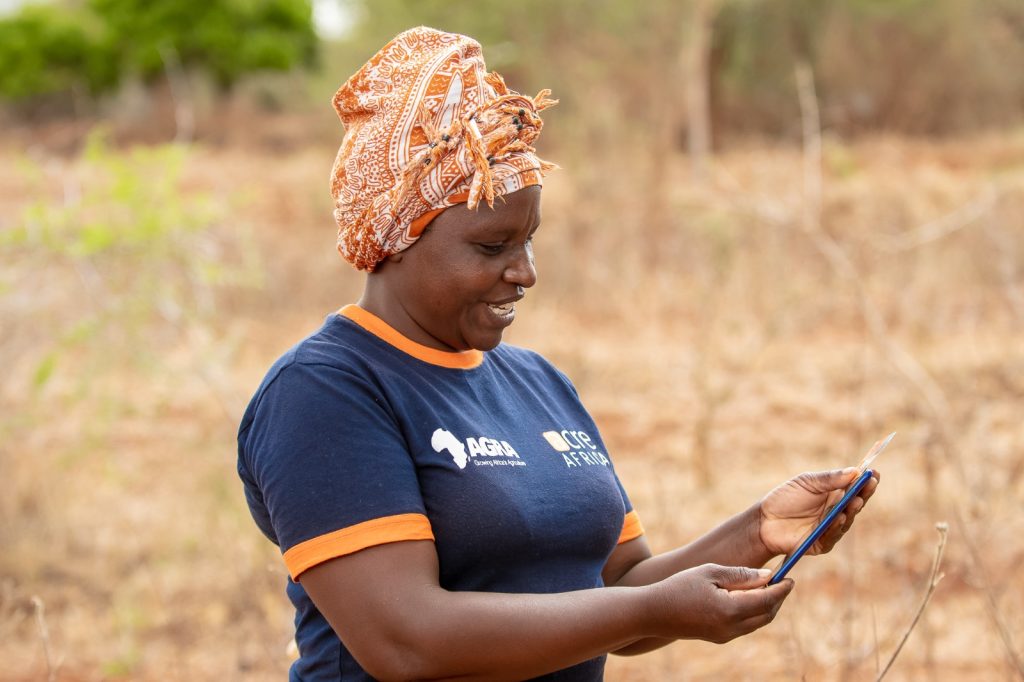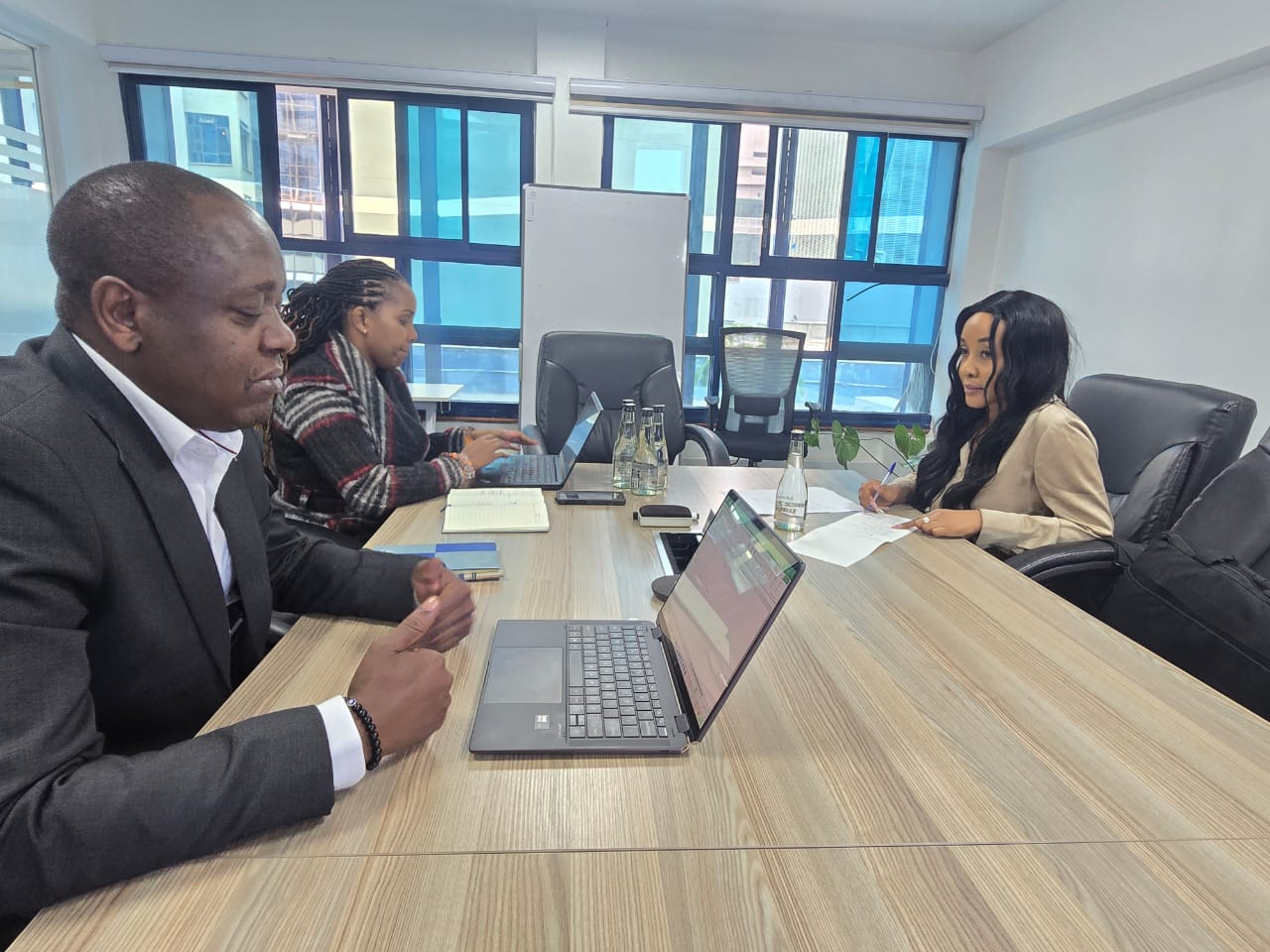In a world of shifting weather patterns, rising input costs, and unpredictable seasons, one thing remains constant: smallholder farmers continue to bear the brunt of climate-induced shocks.
ACRE Africa (Agriculture and Climate Risk Enterprise Ltd.) is transforming the agricultural insurance landscape one innovative solution at a time.
As a licensed insurance intermediary that links smallholder stakeholders in the agriculture and insurance sectors to provide risk mitigation solutions to smallholder farmers. ACRE Africa partners with local insurers to design and deliver smallholder-focused insurance products across agricultural value chains.
We sat down with Farid Keya, Chief Business Officer and Principal Officer at ACRE Africa, and Lina Rachel Ngige, Business Development Manager, ACRE, to explore the organization’s journey, the technologies they are deploying, and how they are walking hand-in-hand with farmers to build climate resilience.
From Kilimo Salama to ACRE Africa: A Journey of Innovation
Q: Farid, take us back to the origins of ACRE Africa. How did the journey begin?
Farid:
Our story started in 2009 when we were incubated under the Syngenta Foundation for Sustainable Agriculture. At the time, Syngenta was providing certified seeds, fertilizers, and agrochemicals to support smallholder farmers. But there was a gap—farmers could access quality inputs, but what happened when drought or floods struck?
We realized that climate variability was the silent threat, and farmers needed a safety net. That’s how Kilimo Salama, our pilot project, was born, pioneering index-based insurance. We even installed over 80 automated weather stations in Kenya and 25 in Rwanda to track rainfall and temperature patterns for risk assessment.
By 2013, Kilimo Salama evolved into ACRE Africa (Agriculture and Climate Risk Enterprise), officially launching with support from the Global Index Insurance Facility (GIF) and the International Finance Corporation (IFC). What began as a project has now been scaled across multiple countries, protecting millions of farmers.
Expanding Across Borders
Q: Beyond Kenya and Rwanda, where is ACRE Africa active today?
Farid:
We now have offices in six countries—Kenya, Rwanda, Tanzania, Zambia, Zimbabwe and Nigeria and collaborations in 15 other countries like Sierra Leone, Ethiopia, Uganda, Tunisia, and South Sudan. We’re also scaling operations to Mauritius, where we’re building an entire ecosystem for smallholder agricultural insurance from scratch—partnering with local insurers, farmer unions, and leveraging digital tools to make insurance both affordable and accessible.
Our partnership with Mercy Corps AgriFin has been critical here. Through platforms like DigiBima, we’ve created USSD-enabled services so farmers can register, pay premiums via mobile money, and access claims seamlessly.

A Portfolio Tailored for Smallholders
Q: What insurance brokerage products does ACRE Africa offer to farmers?
Farid:
Our flagship remains index-based insurance,but we’ve diversified to offer hybrid solutions that cover multiple risks farmers face:Hybrid Cover Insurance, Multi-Peril Cover Insurance, Picture-Based Insurance, Soil Moisture Index Insurance, Weather Index Insurance, Livestock Insurance and Fodder Insurance Cover.
By combining weather data, satellite imaging, and on-ground verification, we ensure farmers receive comprehensive coverage against drought, floods, pests, and diseases.
When the Rubber Meets the Road: Claim Verification
Q: Lina, claims are the true test of insurance. How does ACRE Africa ensure transparency and speed in payouts?
Lina:
You’re right—claims are where trust is built. Farmers buy insurance hoping they never need it, but when disaster strikes, payout speed and accuracy are everything.
We use a hybrid verification system:
- Satellite data detects trigger events like drought or excessive rainfall.
- Village champions and agents report incidents from the ground.
- Loss assessments combine these datasets to determine precise payouts.
This dual approach ensures that farmers see the link between the data and their real-life experiences, building confidence in the insurance process.
Farid:
We’ve also introduced Picture-Based Monitoring (PBM). Farmers with smartphones take periodic photos of their crops, which are analyzed in real time using AI and machine learning to detect pests or diseases.
This not only speeds up claim validation but also allows us to provide advisory services—helping farmers prevent losses before they happen. Interestingly, in Uganda, women farmers showed 60% uptake of PBM, highlighting its potential for gender-inclusive agriculture.
Harnessing Technology to Drive Scale
Q: Beyond PBM, what other technologies are transforming your work?
Lina:
“The biggest pain point for smallholder farmers is delayed payouts. If a farmer’s season ends and compensation only comes months later, it’s too late—they’ve already missed the next planting window.”
- We are exploring piloting blockchain-based claims processing to solve this bottleneck.
This would enable:
- Decentralized Claim Ledger: Every claim and supporting data from satellite triggers, farm photos, and local verification reports is logged on a shared blockchain ledger accessible to farmers, insurers, and re-insurers.
- Transparency and Trust: Farmers can see the status of their claim in real time, eliminating the uncertainty and opacity that often leads to distrust.
- Faster Payments: By having all stakeholders on the same chain, approval and verification steps are automated, reducing claim payout time to less than two weeks—a game-changer for seasonal farming.
Challenges and the Road Ahead
Q: What challenges do smallholder farmers face in adopting agricultural insurance?
Farid:
Awareness and affordability remain the biggest barriers. Even though farmers understand risk, insurance rarely makes their top five priorities due to financial constraints.
Other key challenges include:
- Low digital literacy: Many farmers are unfamiliar with mobile apps or online platforms for insurance.
- Poor connectivity: Rural areas face weak network coverage, low smartphone use, and limited electricity access.
- Data gaps: Reliable weather, soil, and yield data are often missing, affecting the accuracy of index-based products.
We’re addressing this by:
- Bundling insurance with seeds and inputs, so coverage is automatic.
- Partnering with banks and VSLAs to integrate insurance with agri-loans and savings groups.
- Commoditizing insurance, allowing farmers to buy coverage in small, affordable units.
We’ve seen an uptake grow from 100,000 farmers to nearly 1 million farmers annually across our operating countries.
Policy Gaps and the Power of Partnerships
Q: What policy changes could accelerate agricultural insurance adoption in Africa?
Farid:
Governments need to support Public-Private Partnerships (PPPs) and encourage coordinated insurance ecosystems. Reducing operational costs through technology and shared infrastructure is key to making insurance affordable for smallholders.
Looking to the Future
Q: What excites ACRE Africa about the future?
Lina:
We are excited about building farmer resilience—not just compensating losses but improving productivity season after season.
Farid: Our vision is to be a one-stop-shop for agricultural risk management, working hand-in-hand with farmers, insurers, and agri-stakeholders to build resilience and improve productivity.
With the right mix of technology, partnerships, and farmer education, we believe we can transform agricultural insurance from a “luxury” into a lifeline for millions of smallholder farmers across Africa and beyond.

